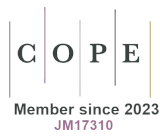Wie viel Information können wir antizipieren? Zum Problem der Inkrementalität und uneingeschränkten Interaktivität beim Satzverstehen
DOI:
https://doi.org/10.18778/1427-9665.13.02Schlagworte:
sentence comprehension, sentence processing, incrementality, anticipation, interactivityAbstract
–
Literaturhinweise
Altmann G.T.M., Mirković J. (2009), Incrementality and prediction in human sentence processing. In: Cognitive Science, H. 33, S. 583–609.
Google Scholar
Aoshima S., Phillips C., Weinberg A. (2004), Processing filler-gap dependencies in a headfinal language. In: Journal of Memory and Language, H. 51, S. 23–54.
Google Scholar
Bader M., Lasser I.(1994), German verb-final clauses and sentence processing: Evidence for immediate attachment. In: Clifton Ch./Frazier L./Rayner K. (Hgg.), Perspectives on Sentence Processing, Hillsdale NJ, S. 225–242.
Google Scholar
Bever T.G.(1970), The cognitive basis for linguistic structures. In: Hayes J.R. (Hg.), Cognition and the development of language, New York, S. 279–362.
Google Scholar
Boland J.E., Boehm-Jernigan H.(1998), Lexical constraints and prepositional phrase attachment.In: Journal of Memory and Language, H. 39, S. 684–719.
Google Scholar
Bornkessel-Schlesewsky I., Schlesewsky M.(2009), Processing Syntax and Morphology: A Neurocognitive Perspective, Oxford.
Google Scholar
Bresnan J.(2001) (Hg.), Lexical-Functional Syntax, Oxford.
Google Scholar
Chomsky N.(1965), Aspects of the Theory of Syntax, Cambridge.
Google Scholar
Chomsky N.(1981), Lectures on Government and Binding. The Pisa Lectures, Dordrecht.
Google Scholar
Crocker M.W., Keller F.(2006), Probabilistic grammars as models of gradience in language processing. In: Fanselow G./Féry C./Vogel R./Schlesewsky M. (Hgg.), Gradience in Grammar: Generative Perspectives, Oxford, S. 227–245.
Google Scholar
Featherston S.(2005), The decathlon model of empirical syntax. In: Kepser S./Reis M. (Hgg.), Linguistic evidence – Empirical, theoretical, and computational perspectives, Berlin, S. 187–208.
Google Scholar
Ferreira F., Clifton Ch.(1986), The independence of syntactic processing. In: Journal of Memory and Language, Bd. 25, H. 3, S. 348–368.
Google Scholar
Fillmore Ch.(1988), The mechanisms of “Construction Grammar”. In: Proceedings of the annual meeting of the Berkeley Linguistics Society, Bd. 14, S. 33–35.
Google Scholar
Fillmore Ch., Kay P., O’Connor M.C. (1988), Regularity and idiomacity in grammatical constructions. In: Language, Bd. 64, H. 3, S. 501–538.
Google Scholar
Hindle D., Rooth, M.(1993), Structural Ambiguity and Lexical Relations. In: Computational Linguistics, H. 19, S. 103–120.
Google Scholar
Jurafsky D.(2003), Probabilistic modelling in psycholinguistics: Linguistic comprehension and production. In: Bod R./Hay J./Jannedy S. (Hgg.), Probablistic Linguistics, Cambridge, MA, S. 39–96.
Google Scholar
Kamide Y., Altmann G.T.M., Haywood S.L. (2003), The time-course of prediction in incremental sentence processing: Evidence from anticipatory eye movements. In: Journal of Memory and Language, H. 49, S. 133–156.
Google Scholar
Kamide Y., Mitchell D.C. (1999), Incremental pre-head attachment in Japanese parsing. In: Language and Cognitive Processes, H. 14, S. 631–662.
Google Scholar
Kempen G., Harbusch K. (2005), The relationship between grammaticality ratings and corpus frequencies: A case study into word order variability in the midfield of German clauses. In: Kepser S./Reis M.(Hgg.), Linguistic evidence – Empirical, theoretical, and computational perspectives, Berlin, S. 329–349.
Google Scholar
Lombardo V., Sturt P. (2002), Incrementality and lexicalism: A treebank study. In: Merlo P./Stevenson S.(Hgg.), The Lexical Basis of Sentence Processing. Formal, computational and experimental issues. Amsterdam, Philadelphia, S. 137–156.
Google Scholar
MacDonald M.C., Pearlmutter N.J., Seidenberg M.S. (1994), The lexical nature of syntactic ambiguity resolution. In: Psychological Review, Bd. 101, H. 4, S. 676–703.
Google Scholar
McRae K., Spivey-Knowlton M.J., Tanenhaus M.K.(1998), Modeling the Influence of Thematic Fit (and Other Constraints) in On-line Sentence Comprehension. In: Journal of Memory and Language, Bd. 38, H. 3, S. 283–312.
Google Scholar
Miyamoto E.T.(2002), Case markers as clause boundary inducers in Japanese. In: Journal of Psycholinguistic Research, Bd. 31, H. 4, S. 307–347.
Google Scholar
Naumann S., Langer H.(1994), Parsing – Eine Einführung in die maschinelle Analyse natürlicher Sprache, Stuttgart.
Google Scholar
Pablos L. (2011), Rich agreement in Basque: Evidence for pre-verbal structure building. In: Yamashita H./Hirose Y./Packard J.L. (Hgg.), Processing and Producing Head-final Structures, Dordrecht u.a., S. 3–22.
Google Scholar
Pickering M.J., Traxler M., Crocker M.W.(2000), Ambiguity resolution in sentence processing: Evidence against frequency-based accounts. In: Journal of Memory and Language, H. 43, S. 447–475.
Google Scholar
Rayner K., Carlson M., Frazier L.(1983), The interaction of syntax and semantics during sentence processing: eye movements in the analysis of semantically biased sentences. In: Journal of Verbal Learning and Verbal Behavior, Bd. 22, H. 3, S. 358–374.
Google Scholar
Schwenk H.-J.(2017a), Ergänzungen und Angaben und sonst nichts? Die syntaktische Umgebung des deutschen Verbs und ihre Gliederung, Frankfurt a.M.u.a.
Google Scholar
Schwenk H.-J. (2017b), Exemplarisches Valenz- und Konstruktionswörterbuch deutscher Verben. Die Differenzierung und Klassifizierung der Begleiter des deutschen Verbs und ihre lexikographische Umsetzung in neuer Konzeption, Frankfurt a.M.u.a.
Google Scholar
Schütze C.T., Gibson E. (1999), Argumenthood and English prepositional phrase attachment.In: Journal of Memory and Language, H. 40, S. 409–431.
Google Scholar
Trueswell J.C., Tanenhaus M.K.(1994), Toward a lexicalist framework for constraint-based syntactic ambiguity resolution. In: Clifton C. Jr./Frazier L./Rayner K. (Hgg.), Perspectives in sentence processing, Hillsdale, NJ, S. 155–179.
Google Scholar
Trueswell J.C., Tanenhaus, M.K., Garnsey S.M.(1994), Semantic influences on parsing: Use of thematic role information in syntactic ambiguity resolution. In: Journal of Memory and Language, Bd. 33, H. 3, S. 285–318.
Google Scholar
Trueswell J.C., Tanenhaus M.K., Kello, C.(1993), Verb-specific constraints in sentence processing: Separating effects of lexical preference from garden-paths. In: Journal of Experimental Psychology: Learning, Memory and Cognition, H. 19, S. 528–553.
Google Scholar
Vosse T., Kempen G.(2000), Syntactic structure assembly in human parsing: a computational model based on competitive inhibition and a lexicalist grammar. In: Cognition, Bd. 72, H. 2, S. 105–143.
Google Scholar
Yoo D.G. (2007), Syntax und Kontext: Satzverarbeitung in kopffinalen Sprachen, Dissertation, Universität Bielefeld.
Google Scholar
Downloads
Veröffentlicht
Zitationsvorschlag
Ausgabe
Rubrik
Lizenz

Dieses Werk steht unter der Lizenz Creative Commons Namensnennung - Nicht-kommerziell - Keine Bearbeitungen 4.0 International.










